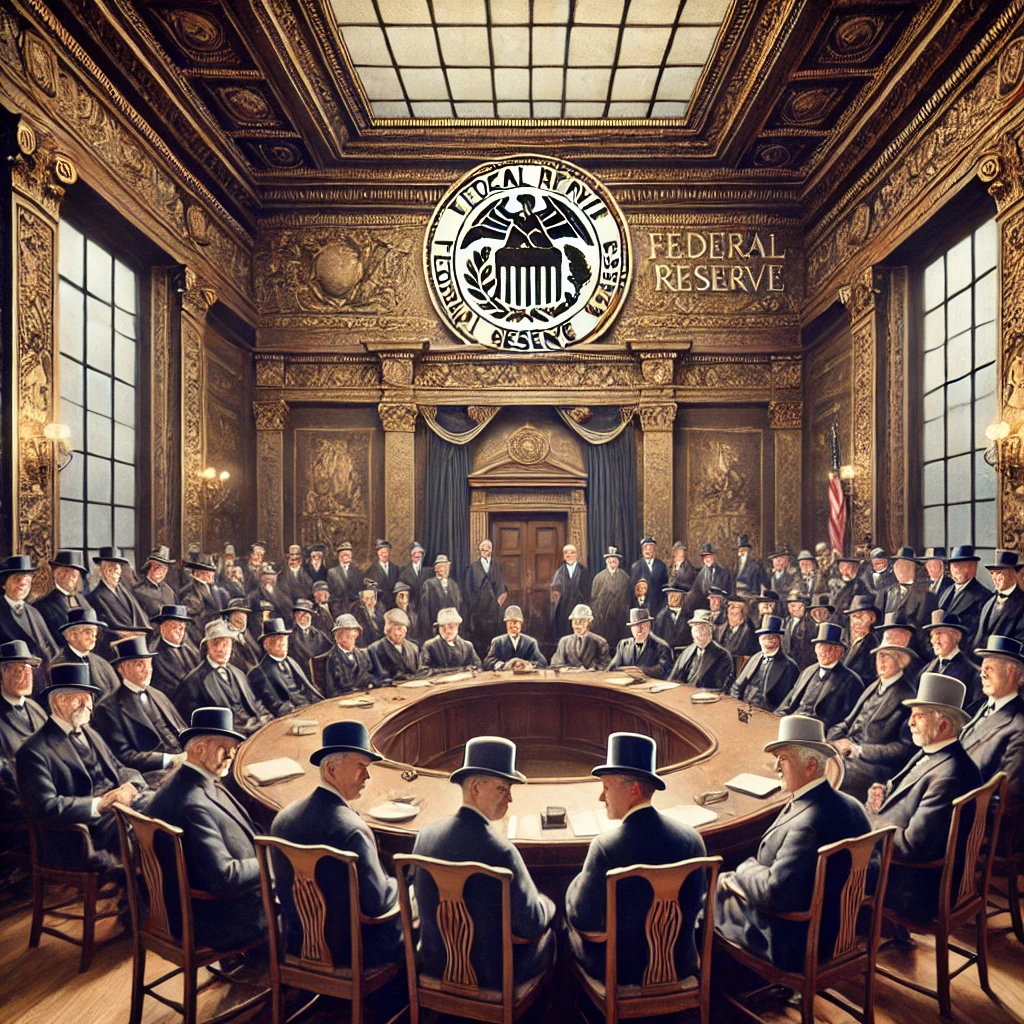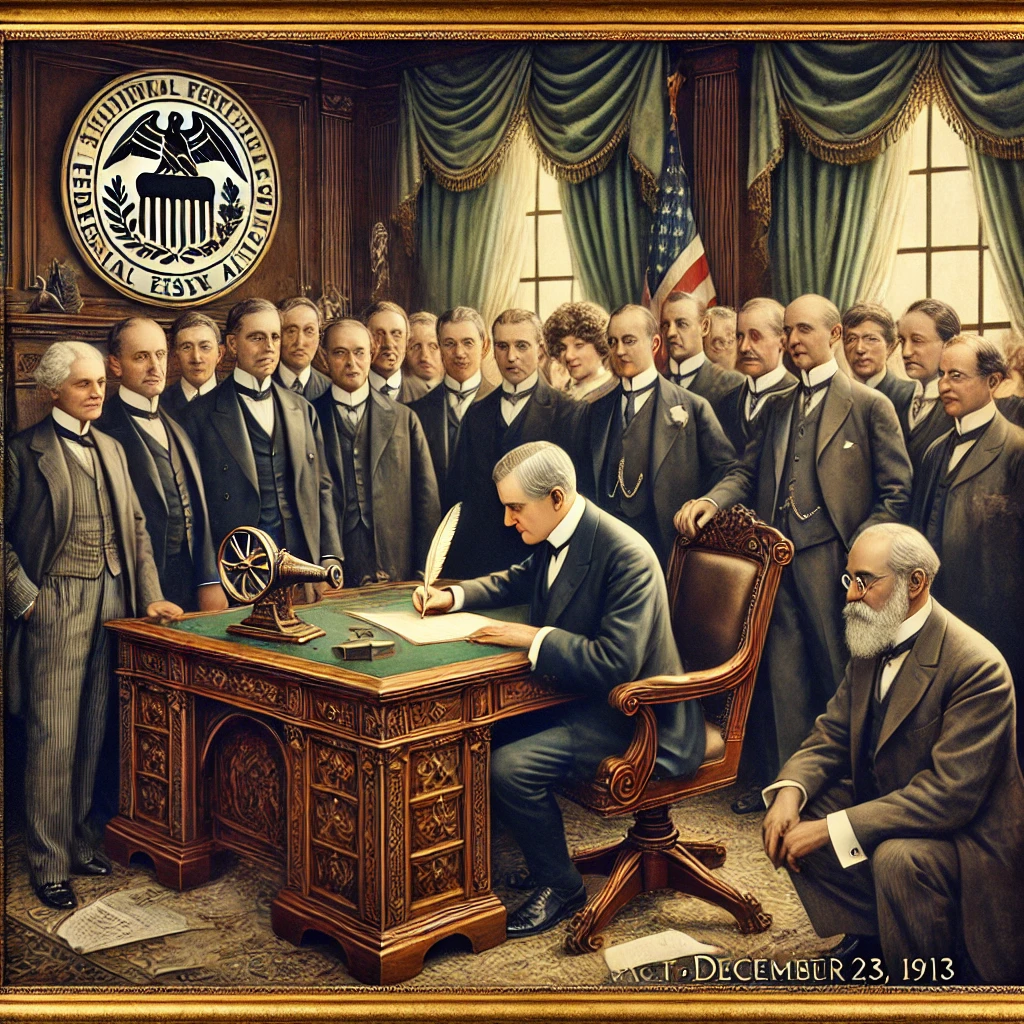December 23rd, 1913, saw the establishment of the Federal Reserve System in the United States, a pivotal moment in the nation’s financial history. Created to provide a stable monetary and financial system, the Federal Reserve System—commonly known as the Fed—has since played a central role in shaping the American economy. Its founding marked the culmination of decades of economic turbulence and laid the groundwork for modern central banking.

The Road to the Federal Reserve
Before the Federal Reserve’s creation, the United States faced recurring financial panics, banking crises, and economic instability. The absence of a centralized banking authority made it difficult to regulate the nation’s money supply and respond to economic disruptions. The Panic of 1907—a severe financial crisis that saw widespread bank failures and a stock market crash—underscored the need for a centralized system to oversee monetary policy and stabilize the financial sector.
In response to these challenges, Congress established the National Monetary Commission in 1908 to study central banking systems in other countries and recommend solutions. This effort led to the drafting of the Federal Reserve Act, championed by President Woodrow Wilson. After intense debate, the Act was signed into law on December 23, 1913, officially establishing the Federal Reserve System as the nation’s central bank.

The Structure and Significance of the Federal Reserve
The Federal Reserve System was designed with a unique structure to balance public and private interests while preventing undue concentration of power. It consists of a Board of Governors based in Washington, D.C., and 12 regional Federal Reserve Banks located across the country. This decentralized framework ensures that the needs of different regions are considered in policymaking, while the Board provides overarching guidance and oversight.
The Fed’s primary responsibilities include regulating the money supply, supervising and regulating banks, and serving as a lender of last resort during financial crises. By setting monetary policy through tools like interest rate adjustments and open market operations, the Fed seeks to promote maximum employment, stable prices, and moderate long-term interest rates. These goals, enshrined in its dual mandate, highlight its critical role in fostering economic stability and growth.
The Federal Reserve’s Enduring Impact

Over the past century, the Federal Reserve has evolved to meet the changing needs of the U.S. economy. It has been instrumental in navigating periods of economic upheaval, including the Great Depression, the stagflation of the 1970s, and the 2008 financial crisis. In each instance, the Fed employed innovative strategies to stabilize the economy and restore public confidence in the financial system.
Today, the Federal Reserve remains at the forefront of economic policy, addressing contemporary challenges such as inflation control, technological changes in banking, and global financial interdependence. Its actions influence not only the U.S. economy but also global markets, underscoring its importance as one of the world’s most influential central banks.
As debates about monetary policy and the role of central banks continue, the Federal Reserve’s establishment stands as a testament to the enduring need for a stable and responsive financial system. The foresight of its creators has ensured that the Fed remains a cornerstone of economic security, adapting to the complexities of an ever-changing world.
